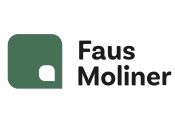Member States may prohibit marketing cosmetics that resemble foodstuffs
Judgment of the Court of Justice of the European Union (Second Chamber), of 2 June 2022, Case
Capsulas Nº 229
Background
In August 2019, Lithuanian authorities withdrew certain cosmetics from the market on the grounds that they were unsafe for consumers, as they resembled foodstuffs; and therefore, according to Directive 87/357, could entail risks to consumers’ health and safety, especially children. The authorities based their decision on Directive 87/357 concerning products with misleading appearances that endanger health or safety of consumers.
The company marketing these cosmetics appealed the decision on the grounds that, according to Directive 87/357, in order to prohibit marketing these products, the authorities would have to (i) demonstrate that the product could be confused with food products (and, in consequence, could be placed in the mouth, sucked or ingested), and (ii) demonstrate by objective and substantiated data that these actions may entail risks such as “suffocation, poisoning, or the perforation or obstruction of the digestive tract”. The company marketing these cosmetics alleged that it is not sufficient for the authorities to merely state that the products could be confused.
The case reached Lithuania’s Supreme Administrative Court, which requested referred to the Court of Justice of the European Union (CJEU) a preliminary question to clarify whether Directive 87/357 establishes a presumption that products with the appearance of foodstuffs are dangerous, or whether this must be proven by objective and substantiated data.
Case-by-case risk analysis
According to the CJEU, Directive 87/357 does not establish a presumption that products of doubtful appearance are dangerous, nor does it oblige competent authorities to demonstrate the risks to the safety and health of persons by objective and substantiated data.
Directive 87/357 merely provides that the marketing, import, manufacture or export of a product may be prohibited if all the following conditions are met: (i) by its very characteristics the relevant product has the appearance of foodstuffs, (ii) it is expectable that the consumer may confuse the product with such foodstuffs, (iii) it is expectable that the consumer will place the product in the mouth, suck it or ingest it and, (iv) these actions may entail risks such as choking, intoxication, perforation or obstruction of the consumer’s digestive tract.
Accordingly, the CJEU concludes that the competent national authority of each Member State must assess whether all these conditions are met on a case-by-case basis and justify the decision to ban the relevant product.
